
- Index
- Brand
- Acoustic Audio (37)
- Alpine (64)
- Befree Sound (28)
- Bmw (61)
- Dc Audio (36)
- Digital Designs (89)
- Ds18 (45)
- Focal (51)
- Jbl (43)
- Jl Audio (139)
- Memphis (143)
- Polk Audio (35)
- Pyle (28)
- Rockford Fosgate (96)
- Rockville (33)
- Seismic Audio (39)
- Sound Town (82)
- Soundstream (44)
- Sundown Audio (268)
- Visual Ice (58)
- Other (1496)
- Connectivity
- Driver Size
- Model
- 10w3v3-4 (5)
- Bfs-5501 (6)
- Bfs-7777x (5)
- Bluetooth Speaker (7)
- C2-650 (6)
- Critical Mass Ul12 (8)
- Irx115s (6)
- Maverickboakit1 (6)
- Mjm644 (5)
- Mm1242svc (6)
- Psu-300tnd (6)
- Sa-15t (6)
- Sdc-1550 (7)
- Sdc-1870 (5)
- Speaker (7)
- U-12 D2 (5)
- Ul12 (9)
- Wireless Speaker (13)
- X-8 V.3 D4 (5)
- Xd700 / 5v2 (6)
- Other (2786)
- Shape
- Type
- Car Subwoofer (20)
- Component (6)
- Enclosed Non-powered (52)
- Enclosed Powered (43)
- Marine Subwoofer (5)
- Non-enclosed Powered (13)
- Pa Speaker (30)
- Pa Speaker System (11)
- Portable Speaker (49)
- Sound System (7)
- Soundbar (29)
- Speaker (17)
- Speakers (9)
- Studio Monitor (6)
- Sub Replacement Cone (6)
- Subwoofer (438)
- Subwoofer System (12)
- Surround / Satellite (8)
- Woofer (40)
- Woofer(s) (7)
- Other (2107)
Critical Mass 12'' Ul12 Audio Jl Subwoofer Speaker Sub Best W7 Focal USA Bass
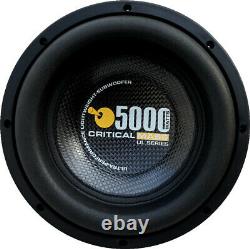

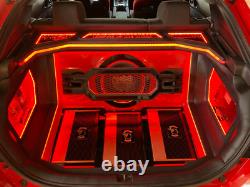
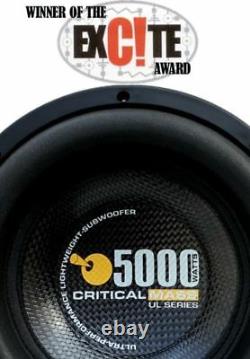
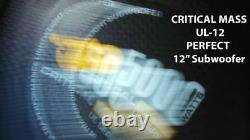
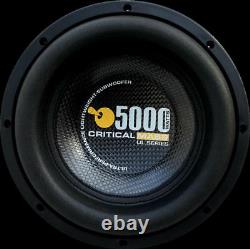
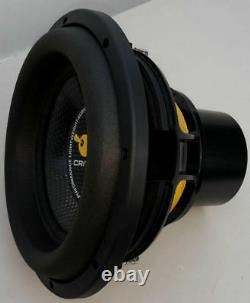
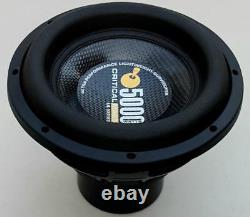
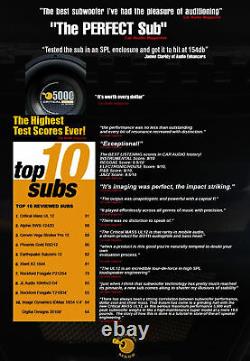
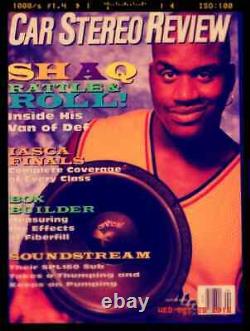
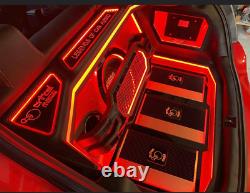
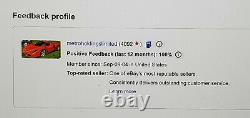


TOP RATED BY THE PRO's AS THE BEST IN SOUND QUALITY. BEST DEALS BEST PRICES ON THE TOP OF THE LINE CRITICAL MASS AUDIO PRODUCTS. CRITICAL MASS UL12 UL-12 SUBWOOFER IN ACTION VIDEO. Video will open in a new window.
ONLY A FEW LEFT --- BRAND NEW. NO RESERVE --- BEST DEAL EVER!! Thank you for shopping with us. Thank you for supporting American JOBS!! We have been a Critical Mass Audio direct dealer for more than 30 years. I was one of their first students when They created the first and Best Car Audio School in the Industry based in Florida.As a USA based and Owned company we are Proud to work and Support American Jobs and Industries. If you are looking for the Best Quality Car Audio Equipment, you are in Great Hands with Critical Mass Audio. As a USA Based and run company we will always support our most important assets which are our Great People and Family. Thank you for looking at our auctions and for supporting the American workforce economy. THANKS FOR SHOPPING WITH US.
Visit their official website for more specifications and details. If you are looking at this action you alredy know about this BEAST of a Speaker. Critical Mass UL12 Test Report - Car Audio and Electronics Magazine.
The Subwoofer By Which All Others Will Be Judged. I know I've said this before, but, just when I think that subwoofer technology has pretty much reached its pinnacle, a new sub comes along to shatter my illusions of stability.
The new high-powered subwoofer that came to my attention is from a company whose Super Fi electrostatics have made a serious impact in the world of high-end mobile sound--Critical Mass. Critical Mass was formed by sometimes-race kart driver Wayde Alfarone in Orlando, FL, in 1990. The subject of this month's review is the subwoofer incorporated into that megabuck system, the Critical Mass UL12 12 subwoofer. There has always been a strong correlation between subwoofer performance, dollar cost and sheer mass. That truism seems to have come to a grinding halt with the new Critical Mass UL12, as this serious maximum performance 5,000-watt peak subwoofer weighs in like a high-maintenance supermodel at a mere 23 pounds.
The story of how this is done is a tutorial in state-of-the-art speaker engineering. Let's start with the frame construction. The Critical Mass UL12's proprietary cast aluminum frame acts as both a giant heatsink and as one of two highly effective faraday shields, or shorting rings, that are incorporated into the motor system of this design.Each of the vertical-orientation frame spokes also does double duty as heatsink fins that protrude through slots in the metal return cup and are aligned in close proximity to the outside diameter of the voice coil. This aids in the critically important tasks of wicking heat away from the voice coil. If you look at the cutaway drawing of the Critical Mass UL12 Fig.
1, the first thing you notice is that this woofer not only has two somewhat small separate magnets, but also two gaps. These diminutive magnets are a special high-temperature neodyminum-iron-boron magnetic material (N-35, for you speaker engineers) that is far stronger per square inch than standard ceramic ferrite magnets and is the key to the UL12's light weight.
The twin-gap technology is known as Multiple Magnet Air Gap (MMAG). Due to the layout of the MMAG neo motor format, Critical Mass was able to mount their frame in such a way as to surround the motor system and form a shorting ring around the outside perimeter of the voice coil. The second shorting ring is located on the inside perimeter of the voice coil and surrounds the smaller upper magnet. The UL12 also has three other thermal pathways, two in the spider-mounting area and one at the rear of the motor.
Integrated into the spider-mounting shelf are eight large roughly 2" x 1.75" vent areas formed by the mounting shelf and the frame that provide copious amounts of airflow over the area of the frame that couples to the top of the motor return cup. Another not-so-obvious feature is the aerodynamic quality of the small neo motor structure that provides an unobstructed pathway for airflow induced by cone motion.
Along with the large vents below the spider-mounting shelf are twelve 1/4 vent holes in the upper part of the voice coil former that are staggered around the perimeter of the former and force airflow though the gap area and over the top plate. The last vent area is a series of eight slot vents located below each frame spoke in the lower outside perimeter of the forged and milled motor return cup that vents air pumped by the motion of the voice coil.
The soul of this long-excursion subwoofer is the MMAG motor structure. Since the voice coil in the UL12 is shorter than the combined length of the two gaps (46mm gap total including spacer height), it appears to be similar to a conventional underhung voice coil motor, but the Critical Mass motor functions in a very different manner. It operates in such a way that the two gaps are always working in conjunction with each other and the total number of wire turns does not begin decreasing until the voice coil starts to leave just one gap. The cone assembly for the Critical Mass subwoofer is no less technically impressive than the frame and motor structure.
Built from layered and laminated carbon graphite and glass fiber, the cone is further reinforced by both the large 6 diameter concave dust cap (made from the same composite material as the cone) and by having the outside perimeter of the cone turned down 90 degrees. This down-turned edge contributes a tremendous amount of rigidity to the rim of the cone assembly. Add to this the circular "flying buttress" support that joins the cone to the voice coil former and the entire assembly moves like one solid mass.Long excursion in a subwoofer requires the suspension to move long distances. The solution used by Critical Mass for the UL12 is a patent-pending technology that vertically glues the outside edge of the surround to the frame, allowing the surround to be attached closer to the outside perimeter of the frame, and this equates to more cone area, or Sd (Sd is an engineering abbreviation for the area of a cone). Rather than being low and wide, the thermally formed foam/rubber surround is a modified ellipsoid shape and is more tall and narrow that the previous generation of wide surrounds.
The result is the same excursion ability, but a greater cone diameter and area. The rest of the cone assembly consists of a single 7-diameter poly fiber resin composite spider that has been optimized to a progressive-regressive hybrid geometry (the wiggles are taller and more narrow at the outside edge of the spider). Tinsel lead wires from the voice coil are stitched in two places to the spider surface.
The dual four-layer voice coil is wound with round aluminum wire with an ultra high-temperature insulation on a black anodized 76.6mm (3) diameter aluminum former with a collar made of multiple reinforcing layers of non-thermally conduction materials (spun lace Nomex and Polyimid). Voice coil tinsel leads are connected to dual color-coded gold-plated push terminals located on opposite sides of the frame. Utilizing the Klippel analyzer (on loan from Klippel GmbH), Pat Turmire, CA&E reviewer and CEO of Redrock Acoustics, performed the large signal analysis on the Critical Mass 12 subwoofer and provided the Bl (X) curve shown in Figure 2.
The black Bl curve shows the motor strength of the woofer as it moves in both directions outward from center rest position. The lighter curve is a type of displacement curve and if both curves were identical, the motor system's motion in and out of the frame would be perfectly symmetrical. When a woofer is totally linear ("linear" indicates that the woofer motion tracks the input signal exactly with zero distortion), the Bl curve should be centered on the 0mm point (where the cone is positioned when there is no signal) and symmetrically decrease Bl (as the number of turns in the gap decreases with outward motion) with the same slope in either direction of voice coil travel. When a woofer exhibits a forward or rearward offset, it may indicate that the magnetic and mechanical systems are not absolutely optimal. If the motor strength decreases more rapidly in one direction (usually the outward direction) than in the other, the result is increased levels of distortion at high operating levels.It is not uncommon, however, for a woofer voice coil to be deliberately offset a few millimeters in order to keep the motor more linear in the 90-110dB SPL range, which exactly describes the situation with the Critical Mass sub. The UL12 Bl (x) curve shows the woofer voice coil is offset by a fairly trivial 1.5mm rearward (inward) from its rest position. This Bl curve is a very symmetrical broad shallow slope plateau with nearly equal slopes in either direction. The displacement at operating SPL near Xmax is nearly 0mm, so this is about as good as it gets. Bl can decrease to approximately 70% of its small signal value and the driver will still function in a satisfactory manner, only with an elevated level of distortion (about 20%).
The 70% of maximum Bl displacement limit for the UL12 is 36.8mm, 4.8mm more than the physical Xmax of 32mm. This subwoofer's Kms(x), or Stiffness of Suspension, curve see Fig. 3 likewise exhibits very good symmetry in both directions of travel. The offset is a negligible 0.5mm rearward at the rest position.
The compliance limit for the suspension when it drops to 50% of its rest value is greater than 36mm. Both "limit" numbers, Bl and compliance, represent the level at which distortion climbs to 20%, which is a realistic criteria for subwoofers given the ear's lack of sensitivity to distortion at low frequencies.Next I produced the T/S (Thiele/Small) parameters for the UL12 subwoofer. Utilizing my normal speaker geek test protocol, I employed a LinearX LMS (Loudspeaker Measurement System) analyzer and VIBox (VI for voltage/current) for measuring dynamic impedance (impedance at different voltage levels). Testing is accomplished through a series of voltage and current sweeps that are later converted to multiple voltage impedance curves.
With the driver clamped to a rigid test stand, measurements were made at 1V, 3V, 6V, 10V, 20V, 30V and 40V (the 40V curves were later discarded as too non-linear for LEAP 5 to curve fit properly). Instead of using the standard added mass (delta mass) or test box method (delta compliance) to find the Vas (volume of air equal to the driver compliance) of this driver, the measured weight of the cone body (with 50% of the surround and 50% of the spider removed) was used instead as this method is considerably more accurate. The group of multi-voltage impedance curves was uploaded into the LEAP 5 CAD program and the Transducer Model Derivation utility used to create the T/S parameters shown in the Data Chart. These numbers were then used to generate the computer box simulation numbers also located in the Data Chart. The UL12 Thiele/Small parameters shown in the Data Chart were used to produce computer box simulations using the Leap 5 Enclosure Shop software. Box simulations were created for both sealed and vented enclosures that made sense for the parameters. For sealed box performance, I used a 1.65ft3 volume with 100% fill material (fiberglass). The 100% fill material was incorporated to provide as low a box Q (Qtc) as possible, since the UL12 has a fairly high Qts, or "Q, " when measured in free-air. The vented box was what is known in engineering parlance as a Chebychev/Butterworth alignment, which turned out to be 1.8ft3 tuned to 32Hz. The LEAP 5 graph curves in Figure 4 show the SPL at 2.83V (black curves) in half-space (imagine the woofer mounted in a speaker baffle as big as a football field and that would be very close to half-space), 2.83V in a small 154ft3 car compartment, about the size of mid-sized SUV like a Nissan Pathfinder or Toyota 4Runner (blue curves), and the SPL at a power level required to get maximum linear excursion (red curves, also half-space). The sealed box curves are solid lines and the ported enclosure curves are the dashed curves. The 2.83V results produced an F3 of about 46Hz for both box types. Increasing the simulated input voltage for the 1.65ft3 sealed box computer simulation to 150 volts increased excursion to where Bl decreased to 70% of its maximum value and pushed the SPL to a very loud 120.5dB. The 1.8ft3 vented box computer simulation required 200 simulated volts to drive the Critical Mass sub to the excursion level where Bl dropped to 70% of it nominal value and resulted in an extremely loud 124.5dB.The UL12 is an incredible tour-de-force in high-SPL loudspeaker engineering and at 16.6lbs it will definitely impact your horsepower-to-weight ratio. For those with the ability to indulge the finer things in life, the UL12 is a sub worth considering, certainly at least from the engineer's point of view.
But as knocked out as I get from such a well-executed design, it always comes down to the same bottom line. The question will always remain whether or not all that science produces a great-sounding woofer, but that's why these reviews are broken into an objective and a subjective section. So how was it Casey? Critical Mass has kept me waiting...Finally, I got my hands on their much anticipated flagship subwoofer, the UL12. Yes, I may have stretched that one a little too far, but while humoring myself I began thinking--if I bought... If I could afford a sub costing two-large, would I be installing it myself? Without a manual, I called up the head honchos at Critical Mass, Wayde Alfarone to get box requirements. After answering a few questions, such as How much power are you using?
" and "What type of vehicle is being fit into? They recommended a 1.35ft3 enclosure with a light amount of loose polyester fill. With no time to waste, I ran to the garage and sliced and diced a 3/4 sheet of MDF to produce a fitting enclosure, complete with additional bracing. Then, I hit small speed bump--determining the mounting hole size for this sub required some mathematics as there are no cut dimensions to be found (a nice thing to include in a manual).
This sub also does not fit standard 12" mounting dimensions either, requiring a hole diameter of approximately 11.68". Its dimensions are closer to a 13" woofer than a 12". With the box done and UL12 mounted, I headed out to my 1999 Toyota 4Runner. I placed the sub in the rear compartment with the woofer facing the right rear corner of the vehicle. To power this sub, I needed something big, so I wired up a Zapco C2K9.0XD I had lying around (SPL measurements were taken by Eric Holdaway in a Ford F-350 Super Cab using the same amplifier). We tested this exact amplifier at just over 2,100 watts (February 2002), so it should be plenty powerful enough for this rated 2,000-watt RMS sub max power is 5,000 watts! However, I don't think I ever approached that output level during my listening tests--as Vance always reminds us, practice safe sound. Adjusting the crossover for this sub was easier than most. It seemed to blend right into the midbass with little adjustment. The gain was set accordingly and the time I had long been waiting for was a CD insert away.This solo standup bass was recorded in the middle of a large studio, mic'ed 3' from the instrument. According to the voice introducing this track, its design purpose was specifically for testing the accuracy of subwoofers. The basis of the song is a strong transient pluck followed by the resonance of the body of the instrument.
Some woofers, when pushed to their limits, will create non-musical sounds displaying their weaknesses. I listened to the UL12 at three volume levels to gauge any changes in the playback.At low volume the performance was no less than outstanding and every bit of resonance recreated with distinction. Pushing the volume up to a more moderate level, the unwavering detail displayed at the lower level was still accounted for, serving up great tonality and a well-rounded timbre. The transients of each pluck of the string are filtered to the midwoofer with the resonant bass routing to the subwoofer. This transition was virtually transparent with the UL12. For toppers, at no time was there localization of the UL12 subwoofer.
Another turn of the volume increased the output roughly 6-8dB for a final analysis. Along with the volume increase came a couple of notes that appeared to be slightly brash. This deficiency was minimal and, to be honest, was accompanied by some rattles in the vehicle bodywork, likely aiding to the displeasure. With disregard to the rattles, the UL12 showed virtually no weakness in this pure, distinguished and difficult track that easily illustrates flaws in a response. The heavy recording of the bass guitar on Ziggy Marley's "Gone Away" lends itself to be a good test in determining purity of a subwoofer.
Overlapping bass lines can be downright difficult to distinguish if not faithfully reproduced. The kick drum playing through the thick bass guitar, as presented on this track, can sound one-notish and muddy on lesser subs. Not the case with the UL12. Each note shift of the bass guitar was notable as was each beat of the overlapping drum that was taut and robust.
With volume, the Critical Mass 12 appeared to sound better, which is not particularly uncommon with a larger format sub such as this. Like the previous track, the UL12 delivered the same seamless blend between itself and the midbass driver with no attention-drawing details pulling the sound to the rear of the vehicle. "Da Funk" has a sharp snap-beat that plays throughout most of the song; it's a simple, electronically derived beat that has a strong kick-to-the-head snap before the fundamental. This track intros with a 25-second segue before the beat checks in. Playback of the snap-beat was powerful with a full-bodied fundamental; no overhang or cone breakup was noticeable even at the highest tolerable listening level.
At 2:26 into the track, the snap-beat stops and a synthesized low frequency shortly replaces the monotony. This ultra-low frequency requires a subwoofer that has good extension to capture its essence, like the UL12. And the UL12 doesn't just play it back with care--it provided me with a therapeutic massage.
After the interlude, the snap-beat picked up again only to temporarily render its "snap" at 4:26, continuing with only the fundamental element. This was well defined by the UL12. If asked to come up with one negative remark in the playback of this track, it would have to pertain to the clarity at low volume. Nitpicks aside, it never skipped a beat. When I listen to "Caught Up" by Usher, I play close attention to a couple of items. The first is the assortment of both tight and strong bass notes. The former was produced with good attack and timbre, close to (but not) the best I have experienced. On the other hand, the strong notes were well rounded with a nice fat tone and ideal decay--the perfect amount of that "boom" I enjoy from time to time, without an exaggerated or muddy overtone. The second thing I fixate on is the scaling bass note, each note with a distinct tone of its own.Presented by the UL12, every tone was easily distinguished from the next. The intensity, or level of each, was recreated as I could only imagine the producer intended. For me, listening to this track was quite enjoyable and I compliment the UL12 as it served up one of the best reproductions of this song's bass I've experienced.
Michael Allen Harrison & Friends "Turn Back the Pages" Last but not least, I auditioned the UL12 using "Turn Back the Pages" by Michael Allen Harrison and Friends. This track uses a bass guitar and percussions that bleed down in the subwoofer range. While complementing each other, these instruments overlap one another throughout the composition.
As I've stated before, overlapping instruments can be difficult to reproduce authentically since the woofer is already in motion when the second instrument is sequenced. Often is the case that a drum attack playing through a bass guitar can sound muddy and blend into the latter. The UL12 was precise and again shone brightly with the upper bass attack of the drums tight, fully complementing the midbass in a solid fixed image; the kick drum was executed with reverence and great clarity, playing through the bass guitar without disorder; and the bass guitar rendition had a nice tonal body just to complement this full-course meal.
It almost pains me when I have only good things to say about a product after testing. Don't get me wrong; it's not because I'm some kind of scrooge and take glee in writing a damning review. Rather, when a product is this good you're naturally tempted to doubt your own evaluation process.
After all, for the benefit of the consumer, your job as a reviewer is to reveal anything negative in a product. The UL12 really doesn't have any drawback in terms of speaker performance. It's surely the best subwoofer I've had the pleasure of auditioning. It played effortlessly across all genres of music with precision, never pigeonholing itself to one specific style of music. Its imaging was perfect, the impact striking.There was no distortion to speak of. The output was unapologetic and powerful with a capital P. The Critical Mass UL12 is that rarity in mobile audio, a dream product for BOTH audiophile and bass head. If there's any drawback, it's the price.
It's worth every dollar. TAKE A LOOK AND OWN THE BEST!! TAKE A LOOK AT THE LINK. BELOW, THE TEST REPORT BY CAR AUDIO. Below is a quote from USACi sound quality World Champion.
I should preface this review with exactly who. The listeners are: Robyn - USACi sound quality. World Champion and me - both musicians and. Needless to say, We are a tough. The overall t ransparency is.
Crystal clear, giving us the sonic illusion that the. Musicians were performing over the engine. Can't express how happy we are with this set. And every other Critical MASS product we've. Had the pleasure of listening to! USACi sound quality World Champion. CRITICAL MASS UL12 - THE ULTIMATE SUBWOOFER. This driver is the first Ultra-Performance Subwoofer to be made with the automotive performance enthusiast in mind. At only 23 lbs, this subwoofer handles up-to 3 times more power, has a considerably higher linear and maximum excursion, and audibly lower distortion, while weighing as much as 66% less than other Ultra-Performance Subwoofer (woofers with an excursion capability of greater than 2.5). These subwoofers made by other companies can weigh as much as 55 lbs. On the other hand, the Critical MASS Ultra-Performance Lightweight Subwoofer will not only play louder and handle more power, but it will also play in a smaller box, and therefore, can save you as much as 100 lbs from subwoofer system weight when combined with the reduced weight of a smaller enclosure (based on two 12 subs). A 100 lbs reduction in your system weight, translates to accelerations gains resulting in up to 1/10th of a second off your 0-60 mph times, or as much as 1 car length faster.(Sealed) Weight: 23 lbs Motor Type: Dual Gap / Internal NEO Magnet Voice Coil Type: Ultra-High Temp Dual Coil (Made in the USA) Voice Coil Diameter: 3" Voice Coil Impedance: 1.5 ohm nominal per coil Xmax (one-way linear excursion): 36 mm (3" peak-to-peak) Maximum Excursion (one way): 46 mm (Almost 4 peak-to-peak) Sensitivity: 96.7 db (2.83V / 1m) (coils in parallel) Fs (Klipple-LSI): 31 Hz Qts (Klipple-LSI): 0.81 Vas (Klipple-LSI): 47.7 Liters. THANKS FOR LOOKING AT OUR AUCTIONS. AS SEEN ON SPEED CHANNEL.
BRAND NEW CRITICAL MASS AUDIO UL12. THIS IS A ONCE IN A LIFETIME CHANCE TO OWN THE VERY BEST SUBWOOFER EVER MADE. HERE ARE SOME COOL PICTURES OF THE AWARD WINNING CRITICAL MASS AUDIO PRODUCTS. THANK YOU FOR SHOPPING WITH US. WE CAN HELP WITH TECH QUESTIONS IF YOU NEED HELP WITH YOUR SOUND SYSTEM.
ONCE AGAIN THANKS FOR SHOPPING WITH US AND GOOD LUCK. For more information on Critical MASS Audio products please visit their official site. Build the best sound systems possible.You can call Critical Mass Audio to verify. Thank you and we hope you have a great day.
This item is in the category "Consumer Electronics\Vehicle Electronics & GPS\Car Audio\Car Subwoofers". The seller is "metroholdingslimited" and is located in this country: US.
- Model: UL12 MADE IN THE USA CARBON FIBER
- Modified Item: No
- Country/Region of Manufacture: United States
- Custom Bundle: No
- Voice Coil: Dual BEST SPEAKER MADE IN USA 5000 WATTS
- Speaker Size: 12in.
- Size: 12 inches
- Enclosure Included: No
- RMS Wattage: 5000
- Type: CRITICAL MASS UL12 SPEAKER SUBWOOFER
- Non-Domestic Product: No
- RMS Power: 5000W
- Brand: CRITICAL MASS AUDIO

